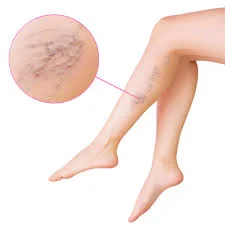Varicose Vein Clinic
Introduction
Varicose Vein Clinic
Varicose veins are gnarled, enlarged veins. Any vein may become varicose, but the veins most commonly affected are those in your legs and feet. That’s because standing and walking upright increases the pressure in the veins of your lower body.
For many people, varicose veins and spider veins — a common, mild variation of varicose veins — are simply a cosmetic concern. For other people, varicose veins can cause aching pain and discomfort. Sometimes varicose veins lead to more serious problems.
Varicose veins may also signal a higher risk of other circulatory problems. Treatment may involve self-care measures or procedures by your doctor to close or remove veins.

Treatment
Varicose veins may not cause any pain. Signs you may have with varicose veins include:
- Veins that are dark purple or blue in color
- Veins that appear twisted and bulging; often like cords on your legs
When painful signs and symptoms occur, they may include:
- An achy or heavy feeling in your legs
- Burning, throbbing, muscle cramping and swelling in your lower legs
- Worsened pain after sitting or standing for a long time
- Itching around one or more of your veins
- Bleeding from varicose veins
- A painful cord in the vein with red discoloration of the skin
- Color changes, hardening of the vein, inflammation of the skin or skin ulcers near your ankle, which can mean you have a serious form of vascular disease that requires medical attention
Causes of varicose veins can include
- Age. As you get older, your veins can lose elasticity, causing them to stretch. The valves in your veins may become weak, allowing blood that should be moving toward your heart to flow backwards. Blood pools in your veins and your veins enlarge and become varicose. The veins appear blue because they contain deoxygenated blood, which is in the process of being recirculated through the lungs.
- Pregnancy. Some pregnant women develop varicose veins. Pregnancy increases the volume of blood in your body but decreases the flow of blood from your legs to your pelvis. This circulatory change is designed to support the growing fetus, but it can produce an unfortunate side effect — enlarged veins in your legs.
Risk factors
These factors increase your risk of developing varicose veins:
- Age. The risk of varicose veins increases with age. Ageing causes wear and tear on the valves in your veins that help regulate blood flow. Eventually, that wear causes the valves to allow some blood to flow back into your veins where it collects instead of flowing up to your heart.
- Sex. Women are more likely to develop the condition. Hormonal changes during pregnancy, pre-menstruation or menopause may be a factor because female hormones tend to relax vein walls. Taking hormone replacement therapy or birth control pills may increase your risk of varicose veins.
- Family history. If other family members had varicose veins, there’s a greater chance you will too.
- Obesity. Being overweight puts added pressure on your veins.
- Standing or sitting for long periods of time. Your blood doesn’t flow as well if you’re in the same position for long periods.

